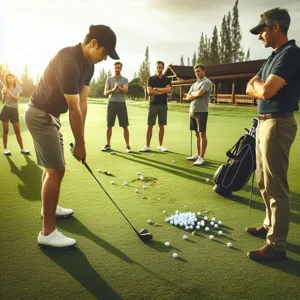In basketball, the free throw is a moment of truth—a solitary opportunity to add points to the scoreboard when the pressure is on.
Whether you’re a seasoned player or just starting out, perfecting this seemingly simple shot can significantly enhance your game and boost your confidence on the court. Many athletes struggle with free throw accuracy, often due to nerves, technique, or a lack of practice. But fear not! In this comprehensive guide, we’ll explore essential tips and techniques to help you master the free throw. From understanding the proper shooting form to developing a consistent routine and overcoming mental barriers, we’ll equip you with the tools you need to elevate your free throw percentage and transform those crucial moments into opportunities for success. Get ready to take your game to the next level!
1. Understanding the Importance of Free Throws in Basketball

Understanding the importance of free throws in basketball is fundamental to both individual player success and overall team performance. Unlike other aspects of the game, where physicality and strategy come into play, free throws present a unique opportunity to score points without any defensive pressure. This makes them particularly crucial in tight games, where every point counts.
Free throws account for a significant portion of the scoring in a game; in fact, it’s not uncommon for a player to find themselves at the free-throw line multiple times throughout a match. A high free throw percentage can be the difference between winning and losing, especially in close contests where every shot matters. Players who excel at free throws not only boost their own scoring but also build confidence, both in themselves and in their teammates.
Moreover, free throws can shift the momentum of a game. A player who consistently sinks their free throws can demoralize the opposing team while energizing their own. This psychological edge can be invaluable during critical moments of a game.
Ultimately, mastering free throws is about more than just the mechanics; it’s about recognizing their strategic value within the broader context of basketball. By honing this skill, players can elevate their game, contribute more effectively to their team, and become reliable scorers when it matters most. Emphasizing the importance of free throws can help players of all levels appreciate this often-overlooked aspect of basketball.
2. The Psychology of Free Throws: Staying Calm Under Pressure
When it comes to mastering the free throw, the mental game is just as critical as the physical technique. The psychology of free throws revolves around maintaining composure and focus, especially in high-pressure situations. Whether it’s a tight game with seconds left on the clock or the audience’s eyes bearing down on you, the ability to stay calm can significantly influence your shooting percentage.
To cultivate this mental resilience, start by developing a pre-shot routine that helps center your thoughts. This could be a series of deep breaths, visualizing the ball going through the hoop, or repeating a positive mantra. Such rituals can ground you, creating a sense of familiarity and control amidst the chaos of the moment.
Moreover, learning to embrace the pressure rather than fearing it is crucial. Many successful players thrive under pressure, viewing it as an opportunity to showcase their skills rather than as a source of anxiety. Practice shooting free throws in varying conditions—simulate game scenarios where the stakes are high, or practice in front of friends or family to mimic the real-life pressure of an audience.
Finally, remember that confidence plays a pivotal role in your free throw success. Each missed shot can weigh heavily on the mind, but maintaining a positive attitude and believing in your ability to make the shot can shift your focus back to execution rather than the outcome. By training your mind to handle pressure with poise, you’ll find that your free throw percentage will soar, even in the clutch moments that matter most.
3. Perfecting Your Stance: Finding the Right Position

Perfecting your stance is a crucial element in mastering the free throw, as it serves as the foundation for a consistent and reliable shot. The right position not only enhances your balance but also ensures that your body is aligned with the basket, allowing you to focus on your target instead of worrying about your mechanics.
Begin by positioning your feet shoulder-width apart, which provides a stable base. Your shooting foot should be slightly ahead of your non-shooting foot, creating a natural line of sight to the hoop. This slight angle allows the weight of your body to shift smoothly as you prepare to shoot, enhancing both power and control.
Next, bend your knees slightly to lower your center of gravity. This not only helps maintain balance but also generates the necessary energy for your shot. As you practice, pay attention to your posture—your back should be straight, and your shoulders should be relaxed. Tension in your upper body can lead to inconsistencies in your shot, so it’s essential to stay loose.
Another critical aspect of your stance is the positioning of your arms. Hold the ball with your shooting hand under it and your non-shooting hand on the side, ensuring that your shooting elbow is tucked in and directly beneath the ball. This alignment is vital for a straight shot, as it keeps your follow-through consistent.
Finally, take a moment to find your rhythm. Some players benefit from a slight bounce or sway before the shot, while others prefer to remain still. Experiment with what feels best for you, and make sure to practice this stance until it becomes second nature. A well-honed stance will not only boost your free throw percentage but will also instill confidence in your shooting ability, allowing you to focus on the basket rather than the mechanics of your shot.
4. The Grip: How to Hold the Ball for Optimal Control
The grip on the basketball is a crucial element that can significantly influence your free throw percentage. Mastering how to hold the ball can enhance your control, stability, and ultimately, your accuracy. Start by positioning your shooting hand under the ball, with your fingers spread wide to create a solid foundation. Your fingertips should make contact with the ball rather than your palm—this allows for better feel and touch.
Next, place your non-shooting hand gently on the side of the ball, acting as a guide rather than a force. This hand should not interfere with the shot; instead, it should stabilize the ball as you prepare to shoot. Ensure that your grip is firm but relaxed—tension can lead to a loss of finesse during the shooting motion.
Experiment with different grips during practice sessions to find what feels most comfortable for you. Some players prefer a “C” shape with their shooting hand, while others might favor a more traditional grip. Remember that consistency is key; the grip you choose should feel natural and repeatable.
Additionally, pay attention to the ball’s position relative to your body. Holding the ball around waist height or slightly above can help you maintain an optimal shooting stance. By fine-tuning your grip, you’ll not only increase your control over the ball but also build confidence in your shooting ability, setting the stage for a successful free throw.
5. The Shooting Motion: Step-by-Step Breakdown

The shooting motion is the heart of a successful free throw, and mastering it can significantly boost your shooting percentage. Let’s break down the process step by step, allowing you to develop a consistent and repeatable technique.
**1. Stance and Balance:** Start by positioning your feet shoulder-width apart. Your shooting foot should be slightly ahead of the non-shooting foot, providing a stable base. Distribute your weight evenly between both feet, and keep your knees slightly bent to enhance balance and prepare for the upward motion.
**2. Grip and Hand Placement:** Hold the basketball with your shooting hand under the ball and your non-shooting hand on the side for support. Your shooting fingers should be spread comfortably, ensuring you have control. The ball should rest on your fingertips, not on your palm, allowing for a clean release.
**3. Focus on Your Target:** Before raising the ball, take a moment to visualize the hoop. Many players find success by focusing on the back of the rim or the center of the hoop, honing in on a specific target rather than the entire rim. This mental imagery helps create a clearer line of sight and enhances concentration.
**4. The Shooting Motion:** As you begin your shot, engage your legs, pushing upward with a smooth motion. Your shooting elbow should be aligned with the hoop, and your wrist should be relaxed. Raise the ball to your shooting pocket—this is typically around your forehead level.
**5. The Release:** As you reach the apex of your shot, extend your arm fully towards the basket while flicking your wrist. This motion should be fluid and follow through, allowing the ball to roll off your fingertips with backspin. A proper follow-through is essential; hold your arm up as if you’re reaching into the cookie jar, which reinforces a straight shot trajectory.
**6. Practice and Adjust:** Finally, repetition is key. Practice your shooting motion regularly while focusing on each component. If you notice inconsistencies, record yourself or seek feedback from a coach. Adjust your stance, grip, or follow-through as necessary until you find the rhythm that works best for you.
By breaking down the shooting motion into these manageable steps, you can refine your technique and gain the confidence needed to excel at the free throw line. Remember, consistency comes with practice, so dedicate time to mastering each element of your shot, and watch your free throw percentage soar!
6. Developing a Consistent Routine: Pre-Shot Rituals
When it comes to mastering the art of the free throw, developing a consistent routine is pivotal in elevating your shooting percentage. A well-crafted pre-shot ritual not only helps you focus but also instills a sense of confidence as you step up to the line. The beauty of a routine lies in its ability to create familiarity; each time you approach the free-throw line, your body and mind are conditioned to respond in a specific way.
Start by determining the key elements that make you feel comfortable and concentrated before each shot. This could include a few deep breaths to calm your nerves, a quick bounce of the ball to establish your rhythm, or a specific number of dribbles. As you create your ritual, consider incorporating visual cues that remind you of your form and technique. For instance, you might visualize your shot going in as you stand at the line, mentally rehearsing the trajectory and follow-through.
Consistency is key—performing the same sequence of actions before every free throw helps to eliminate distractions and ground you in the moment. Over time, your brain will associate these movements with successful shots, reinforcing muscle memory and boosting your overall confidence.
Remember to practice your routine under varying conditions. Whether in a quiet gym or during a high-stakes game, your ritual should be adaptable yet reliable. By cultivating a consistent pre-shot routine, you not only enhance your focus but also empower yourself to step up to the free-throw line with unwavering confidence, ready to convert every opportunity into points.
7. Focus and Concentration: Techniques to Improve Mental Clarity

When it comes to mastering the free throw, physical technique is undeniably important, but mental clarity can be the game-changer that elevates your performance. Free throws are often the most consistent scoring opportunity in basketball, yet they can feel incredibly pressured. To improve your percentage, you must cultivate a state of focus and concentration that allows you to block out distractions and hone in on your shot.
Start by establishing a pre-shot routine that centers your mind. This could involve taking a deep breath, visualizing the ball going through the hoop, or repeating a positive mantra. Such rituals not only prepare your body but also signal your brain that it’s time to focus. The goal is to enter a zone where external noise fades away—whether it’s the roar of the crowd, the chatter of teammates, or the pressure of the moment.
Another vital technique is to practice mindfulness. Spend a few minutes each day engaging in mindfulness exercises, such as meditation or deep-breathing techniques. These practices can enhance your ability to concentrate by training your mind to stay present and calm under pressure. When you approach the free throw line, this newfound mental clarity will help you maintain a steady hand and a clear vision of your target.
Consider incorporating visualization into your practice routine as well. Picture yourself sinking the free throw with perfect form, feeling the ball leave your fingertips and watching it arc gracefully toward the hoop. The more vividly you can imagine this success, the more likely you are to replicate it in real games.
Lastly, embrace the idea of positive self-talk. Replace any negative thoughts or doubts with affirmations of your skills and abilities. Instead of thinking, “I hope I make this,” shift to “I know I can make this.” This shift in mindset not only boosts your confidence but also reinforces your commitment to the shot.
By honing your focus and concentration through these techniques, you’ll not only improve your free throw percentage but also bolster your overall performance on the court. Remember, basketball is as much a mental game as it is physical, and mastering your mind can lead to mastery of the free throw.
8. The Role of Follow-Through: Ensuring Accuracy and Consistency
The follow-through is often an overlooked aspect of shooting free throws, yet it plays a crucial role in achieving accuracy and consistency. Think of the follow-through as the final brushstroke on a masterpiece; it can make all the difference in how your shot lands. When you release the ball, your hand should extend toward the basket, fingers pointing downwards, as if you’re reaching into the hoop. This not only helps guide the ball on its intended path but also allows you to maintain the perfect arc.
To develop a reliable follow-through, focus on a few key elements. First, ensure your shooting hand is relaxed and that your fingers gently cradle the ball. A tense grip can lead to erratic shots, while a loose grip allows for a smoother release. After the ball leaves your hands, hold your follow-through for a brief moment, allowing your body to internalize the motion. This practice reinforces muscle memory, helping to build a consistent shooting rhythm.
Another vital aspect of the follow-through is body alignment. Your shoulders, hips, and feet should all be square to the basket. This alignment not only stabilizes your shot but also enhances your ability to deliver the ball with precision. Pay attention to your body posture as you shoot; a slight deviation can significantly impact the outcome.
Lastly, consider visualizing your shot as you practice your follow-through. Imagine the ball swishing through the net as you complete your motion. This mental rehearsal can enhance your confidence, making it easier to replicate successful shots during games. By honing your follow-through, you’ll find that your free throw percentage will improve, fostering a sense of control and poise at the charity stripe. Remember, a well-executed follow-through is more than just a finishing touch; it’s an integral part of your shooting mechanics that can elevate your game to new heights.
9. Analyzing Your Shooting Form: Common Mistakes to Avoid
When it comes to mastering the free throw, understanding your shooting form is crucial. Many players overlook the intricacies of their technique, leading to persistent mistakes that can significantly impact their shooting percentage. By analyzing your form and identifying common pitfalls, you can make the necessary adjustments to elevate your game.
One of the most prevalent mistakes is improper alignment. Your feet should be shoulder-width apart, with your shooting foot slightly ahead. If your stance is off-balance or your body is misaligned with the basket, you’ll struggle to achieve accuracy. A good practice is to visualize a straight line from the free throw line to the center of the hoop—your body should be aligned along this line when you shoot.
Another frequent error is the grip on the basketball. Many players tend to hold the ball too tightly, which can lead to tension in your arms and wrists. Instead, focus on a relaxed grip, allowing your fingers to provide just enough control to guide the ball. Remember to keep your shooting hand under the ball, while your guide hand should be positioned on the side. This balance is essential for a smooth release.
Also, pay attention to your follow-through. A common mistake is to drop your shooting hand prematurely, negating the backspin and trajectory needed for a successful shot. Instead, envision reaching through the hoop as you finish your shot. Your fingers should point toward the basket, allowing for a natural arc that increases your chances of making the basket.
Finally, don’t underestimate the importance of your mental approach. If you focus solely on mechanics without a positive mindset, you may find yourself hesitating or rushing your shot. Incorporate visualization techniques, imagining successful free throws before stepping to the line.
By diligently analyzing your shooting form and addressing these common mistakes, you’ll be well on your way to boosting your free throw percentage and building confidence at the charity stripe. Remember, consistency is key, and with practice, you’ll turn these tips into second nature, making you a formidable free throw shooter.
10. Practicing with Purpose: Drills to Enhance Free Throw Skills
Practicing with purpose is the cornerstone of elevating your free throw percentage, and incorporating specific drills into your training routine can make all the difference. Rather than simply shooting free throws aimlessly, focus on structured exercises that emulate game-like conditions and encourage muscle memory. Here are a few effective drills to enhance your free throw skills:
**1. The 100 Free Throws Challenge:** Set a goal to make 100 free throws in one session. This not only builds stamina but also helps you get comfortable with the repetitive motion of the shot. Track your makes and misses to gauge improvement over time. Focus on your technique with every shot, and make adjustments as necessary.
**2. Pressure Free Throws Drill:** Simulate game pressure by introducing a scoring element to your practice. For instance, shoot a set number of free throws and assign a penalty for each miss, such as running a lap or doing push-ups. This drill can help you become accustomed to performing under pressure, mirroring the intensity of a close game situation.
**3. Visualization Techniques:** Spend a few moments before each session visualizing yourself successfully making free throws. Imagine the ball going through the hoop, the sound of the net, and the feeling of accomplishment. This mental practice can build confidence and reinforce positive shooting habits.
**4. One-Handed Free Throws:** To improve your shooting form, practice free throws using only your shooting hand. This drill helps you focus on the mechanics of your shot without the non-dominant hand interfering. It’s a great way to isolate your shooting motion, ensuring that your follow-through and release are on point.
**5. Routine Reinforcement:** Develop a consistent pre-shot routine that you follow every time you step to the line. This may include dribbling the ball a specific number of times, taking a deep breath, or visualizing the shot. A strong routine can help center your focus and create a sense of familiarity, making you feel more comfortable and confident during actual games.
By integrating these purposeful drills into your practice regimen, you’ll not only refine your free throw technique but also build the mental resilience needed to perform under pressure. Remember, consistent and focused practice can transform your free throw shooting from a source of anxiety into one of your greatest assets on the court.
11. Tracking Your Progress: Keeping a Free Throw Journal
Tracking Your Progress: Keeping a Free Throw Journal
One of the most effective ways to improve your free throw percentage is to maintain a dedicated free throw journal. This simple yet powerful tool allows you to document each practice session, track your successes, and identify patterns in your shooting performance. Start by noting the date, time, and location of each practice, along with the total number of free throws attempted and made. This will enable you to calculate your percentage for each session, providing a clear picture of your progress over time.
But don’t stop there—delve deeper into your shooting mechanics by jotting down observations about your form, focus, and any distractions you encountered. Were you feeling fatigued? Did you notice a dip in concentration? By recording these details, you can pinpoint specific areas for improvement. For instance, if you consistently struggle on nights when you’re tired, you might consider adjusting your practice schedule or focusing on your mental preparation.
Additionally, a free throw journal can help you set realistic goals and celebrate milestones. By tracking incremental improvements, you’ll boost your motivation and reinforce the positive habits that lead to success. Create benchmarks for yourself, such as aiming to increase your percentage by a certain amount over the course of a month, and don’t forget to reward yourself when you achieve these goals.
Incorporating this habit into your training regimen not only fosters accountability but also transforms your approach to learning. As you watch your stats improve and your shot become more reliable, you’ll gain confidence in your free throw abilities—an essential element for any player looking to excel on the court. So grab a notebook or an app, and start documenting your journey to free throw mastery today!
12. Learning from the Greats: Studying Successful Free Throw Shooters
One of the most effective ways to elevate your free throw game is to study the methods and techniques of successful shooters. Throughout basketball history, there have been players who have not only excelled at the free throw line but have also set records that reflect their dedication to perfection. By observing these greats, you can glean valuable insights into their shooting mechanics, mental approaches, and practice routines.
Take a closer look at players like Stephen Curry, who combines a fluid shooting motion with an unwavering focus. Watch how he aligns his body, maintains his balance, and follows through with confidence. Notice the way he takes a deep breath before each shot, a ritual that helps him center his focus amidst the pressure.
Similarly, consider the technique of players like Rick Barry, known for his unorthodox underhand free throw style that contributed to an impressive career percentage. His unique approach serves as a reminder that there’s no one-size-fits-all method; sometimes, embracing your individuality can lead to success.
Watching game footage, analyzing slow-motion videos, and even attending shooting clinics can provide you with a wealth of knowledge. Pay attention to their foot placement, the angle of their elbows, and the rhythm of their shot. Take notes on how they handle pressure situations, as mental fortitude is just as crucial as physical skill.
Moreover, consider reaching out to coaches or trainers who have worked with these elite players. They can offer firsthand accounts of what makes these shooters stand out and help you incorporate similar techniques into your routine. By learning from the legends of the game, not only will you enhance your technical skills, but you’ll also develop a mindset geared toward success, making you a more confident and consistent free throw shooter. Embrace the opportunity to absorb their wisdom, and watch as your percentage begins to soar.
13. Incorporating Free Throws into Game Scenarios
When it comes to mastering the free throw, practice makes perfect—but not all practice is created equal. To truly elevate your free throw percentage, it’s essential to incorporate game scenarios into your training. Instead of simply shooting free throws in a quiet gym with friends or alone, simulate the pressure and intensity of an actual game.
Start by setting up drills that mimic real-game situations. For instance, imagine you’ve just been fouled after a crucial play; the clock is winding down, and your team is depending on you. Before stepping up to the line, take a few moments to visualize the scenario. Picture the crowd’s energy—the cheers, the jeers, the palpable tension in the air. This mental preparation can help bridge the gap between practice and performance.
You can also introduce situational drills where you must shoot free throws immediately after running a play or engaging in a scrimmage. For example, after making a fast break down the court, take a moment to catch your breath and then step to the line for a free throw. This type of training not only conditions your body but also your mind to handle the fatigue and pressure that comes with game time.
Additionally, consider pairing free throws with other skills. After making a basket during a practice drill, have your coach whistle for a foul, and then step up for your free throw. This method encourages fluidity between different aspects of your game, reinforcing that free throws are just another part of your overall performance.
Incorporating free throws into game scenarios not only sharpens your shooting technique but also builds confidence, ensuring that when the stakes are high, you’ll be ready to deliver. By embracing the intensity of game-like situations during practice, you’ll find yourself more comfortable and consistent when it truly matters.
14. Overcoming Performance Anxiety: Tips for Game Day Success
Performance anxiety can be a formidable opponent on game day, often creeping in just as you step up to the free throw line. The pressure of the moment, the eyes of spectators, and the weight of expectations can cause even the most skilled players to falter. However, with the right strategies, you can conquer this anxiety and boost your free throw percentage when it matters most.
First and foremost, preparation is key. The more familiar you are with your routine, the more confident you’ll feel. Develop a consistent pre-shot routine that includes deep breathing exercises to calm your nerves. Inhale slowly, hold for a moment, and exhale, visualizing the ball swishing through the net. This not only helps center your focus but also grounds you in the present moment, away from distractions.
Visualization can also play a crucial role in overcoming anxiety. Before the game, take a few moments to close your eyes and imagine yourself sinking each free throw with ease. Picture the ball leaving your hand perfectly, feeling the satisfying swish as it goes through the hoop. This mental rehearsal creates a sense of familiarity and comfort, enabling you to approach the line with confidence.
Another effective tactic is to embrace the pressure rather than shy away from it. Instead of viewing the free throw as a daunting task, reframe it as an opportunity to shine. Remind yourself that you’ve practiced countless times and that you have the skills to perform under pressure. Adopting a positive mindset can shift your focus from fear to excitement, transforming your anxiety into a powerful motivator.
Finally, don’t hesitate to lean on your teammates for support. Communicate openly about your feelings and remind each other that you are in this together. Encouragement from your peers can create a sense of camaraderie that eases the tension and boosts your confidence.
By implementing these strategies, you can effectively manage performance anxiety and elevate your game-day success. Remember, mastering the mental aspect of free throw shooting is just as important as your physical skills. With practice and perseverance, you’ll find yourself not just making the shots, but thriving under pressure.
15. Conclusion: The Path to Becoming a Free Throw Specialist
In conclusion, mastering the art of the free throw is a journey that requires dedication, patience, and consistent practice. Becoming a free throw specialist isn’t merely about talent; it’s about cultivating the right mindset and developing a routine that works for you. As you reflect on the tips shared throughout this guide, remember that every successful free throw shooter, from the legends of the game to the weekend warriors, has faced their own challenges and setbacks.
Start by incorporating the fundamentals into your routine: establish a consistent shooting form, find your rhythm, and hone your mental focus. Visualize success before stepping to the line, and embrace the pressure as an opportunity to shine. Utilize drills that reinforce your muscle memory, and don’t shy away from tracking your progress—this will keep you motivated and help identify areas for improvement.
Most importantly, remember that the journey to becoming a free throw specialist is ongoing. Each time you practice, you are investing in your confidence and skill. Celebrate small victories along the way, and don’t forget to learn from any missed shots. The court is your canvas, and with each free throw, you are painting your path to success. Keep shooting, keep refining, and soon enough, you’ll find yourself not just meeting, but exceeding your free throw goals. The key lies in persistence, and as long as you keep striving, the title of free throw specialist is within your reach.
In conclusion, mastering the free throw is a skill that can significantly enhance your overall game and boost your confidence on the court. By incorporating the essential tips we’ve discussed, such as developing a consistent routine, focusing on your breathing, and maintaining proper shooting mechanics, you’ll be well on your way to increasing your free throw percentage. Remember, practice is key; the more you dedicate time to honing this skill, the more natural it will become. So grab your basketball, head to the court, and start perfecting those free throws! With determination and the right mindset, you’ll not only see improvement but also enjoy the satisfaction of knowing you’ve taken a vital step towards becoming a more complete player. Happy shooting!




































